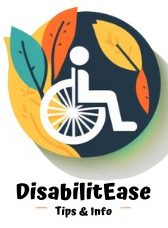Living alone with a broken arm can be challenging. While your body heals itself, casts support your fractured bones, surrounding soft tissue, damaged tendons, and ligaments.

After your doctor puts your wounded limb back in the proper position, they are specially manufactured to fit the afflicted area.
Casts are made of plaster or fiberglass for durability to hold your bones and tissues as they heal. Padding and cotton are placed beneath the cast’s outer shell to protect your skin.
We have a related article for you, you can read Tips For Living With A Broken Right Arm.
Some fiberglass casts are water-resistant, but just before taking your cast wet, be careful to consult with your doctor.
How To Live More Comfortably While Wearing An Arm Cast? Tips For Living With An Arm Cast
Casting is a pain to wear. Adjusting to an arm cast can be difficult for adults and children. Most casts should be thoroughly dried, which makes bathing challenging and causes your skin behind the fiberglass or plaster cage to itch eventually.
You might have to wear your cast for a time because it might take weeks or months for bones and other tissues to recover.
The discomfort might continue even if the pain goes away after a few days. There are some suggestions to help you live more comfortably while having an arm cast because we understand your misery.
- Adjust your surrounding environment:
Typical daily tasks that were previously extremely simple to do can become complicated when wearing an arm cast.
Have a friend or a family member reorganize your living space to put frequently used items within reach, stock the refrigerator with microwaveable meals, add pillows to your mattress to improve sleeping comfort, and make other adjustments that will make it simpler for you to get by for several weeks with restricted arm use.
- Keep the cast dry and spotless:
To prevent damaging your cast, you must keep it dry. Avoid dirt, which can promote itching or skin irritation. You should get an arm cast shower cover right away since fiberglass or plaster casts made the old-fashioned strategy, with cotton inside, cannot withstand moisture. But never put all your trust in the cast cover.
Take all cautions to keep your cast dry because even a tiny hole or a few droplets getting into the cover might harm your cast. Additionally, assist little children or older adults with showering so they won’t need their casts to be redone.
- Exercise regularly:
Don’t forget your other body parts as you heal from a fractured bone. Doctors advise low-intensity lower body exercises for cardiovascular exercises, such as walking or riding a stationary recumbent bike.
You can use your arm for both tasks with limited motion, which won’t interfere with its ability to mend. It is advised to perform lower body machinery exercises that require a pin to set the weight instead of handling weights.
Sit-ups and raises with your legs straightened while lying on your back are other secure possibilities. Any plank exercise or other workouts that require using your damaged arm should be avoided.
- Trying using ice to soothe your itching:
A cast will eventually cause the skin under it to itch. Never scratch beneath your cast with a wire piece or another object. A severe infection may result from skin tearing.
Instead, blast air inside the cast using a tiny personal fan or a blow dryer on the cool setting. The drying and air circulation could lessen the severe irritation. Inquire with your doctor about additional means of arm cast-itching relief.
- Decorate your arm cast if you can:
Using acrylic paints to embellish your cast can be a secure, non-toxic option. You can make entertaining photographs with it to rock your cast in style.
Additionally, utilizing markers is another secure technique to embellish your cast. People frequently have loved ones write encouraging messages in permanent markers on their cast to cheer them up.
Additionally, cast coverings are available in various hues and materials, making it simple to coordinate your cast with your attire. Another option is to create your cast cover from supplies you already have at home using fabric paints etc.
- Apply an ice pack to the cast arm:
During the initial days following your injury, you can apply an ice pack to the cast to reduce pain and swelling. Make careful to lay a cloth between the ice pack and your cast and to place the ice pack inside a sealed plastic bag.
Keep your cast from getting wet from the ice pack. In the initial days following an injury, applying ice for approximately half an hour at a time might accelerate bone and soft tissue healing.
- If your pain is extreme, go to your doctor:
An arm cast can be annoying, but it shouldn’t hurt or impair your ability to move your fingers. Immediately, call your doctor for an appointment if your discomfort worsens rather than improves, if swelling rises, or if your skin becomes irritated near any cast openings.
Never file or damage the cast’s edges to make them more comfortable. Your doctor should assess and modify the cast to relieve your symptoms.
- Keep an optimistic outlook and way of thinking:
It’s common to experience moments of discouragement if you’re wearing a cast. However, you can avoid getting depressed if you strive to focus on the long-term objectives of your rehabilitation rather than your current circumstances.
Enjoy an activity that is not relevant to sports or workout during the period you cannot exercise. Spend time with your dear ones, read a new book, and enjoy a TV show or series you’ve been dying to see. The cast will eventually come off, and you’ll soon return to your routine.
We hope this post gave you some ideas on how to live more efficiently with a cast.

Hi, my name is Eddie, I am a professional trainer specializing in the elderly population and I’m also a website designer. I love training in the gym, going to the beach, traveling, and having good food.
I combined my love for sport and website designing to make “DisabilitEase” whose purpose is to help elderly and disabled people live a more full and active life, have more fun, and enjoy their unique journey despite any disability.



